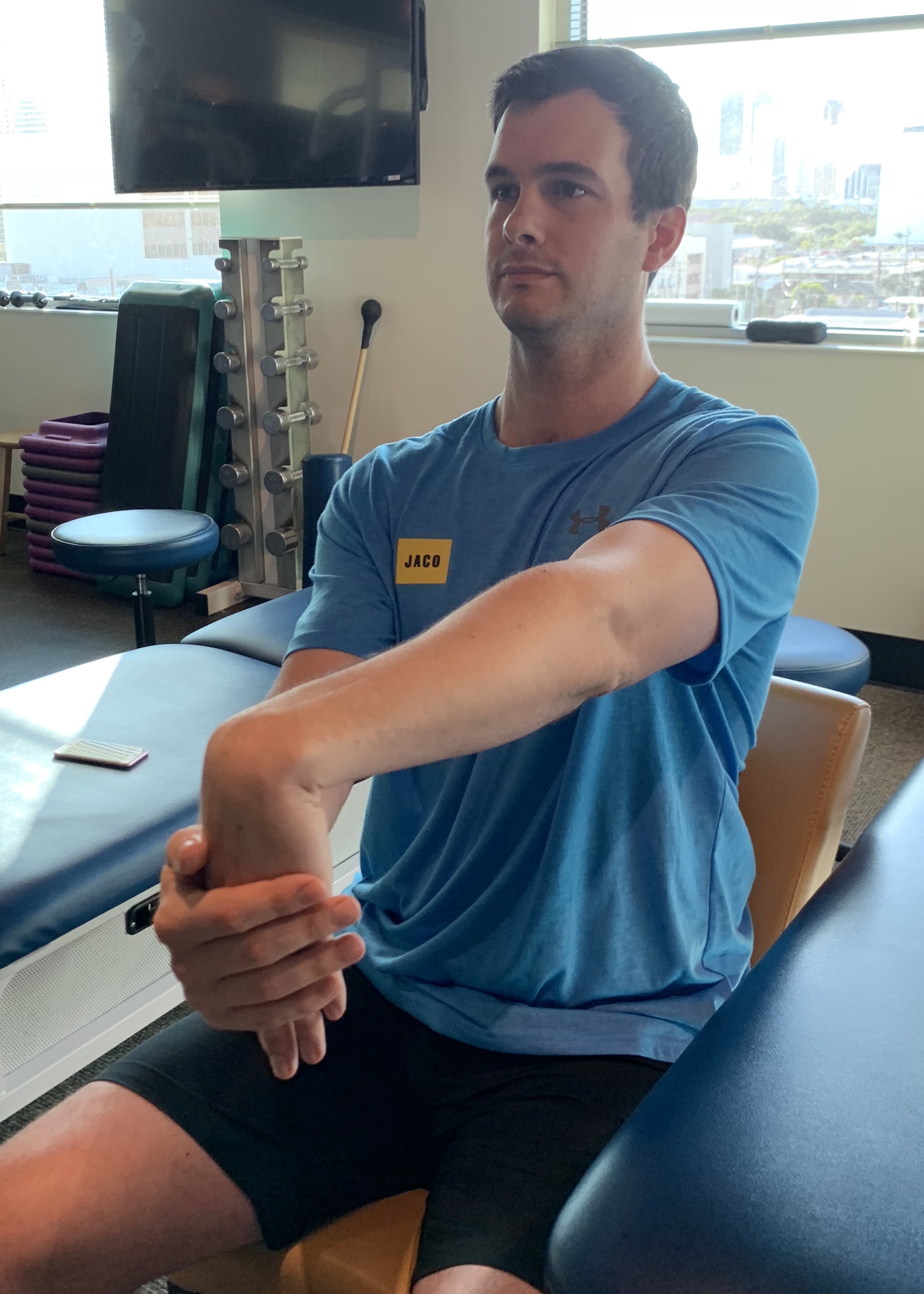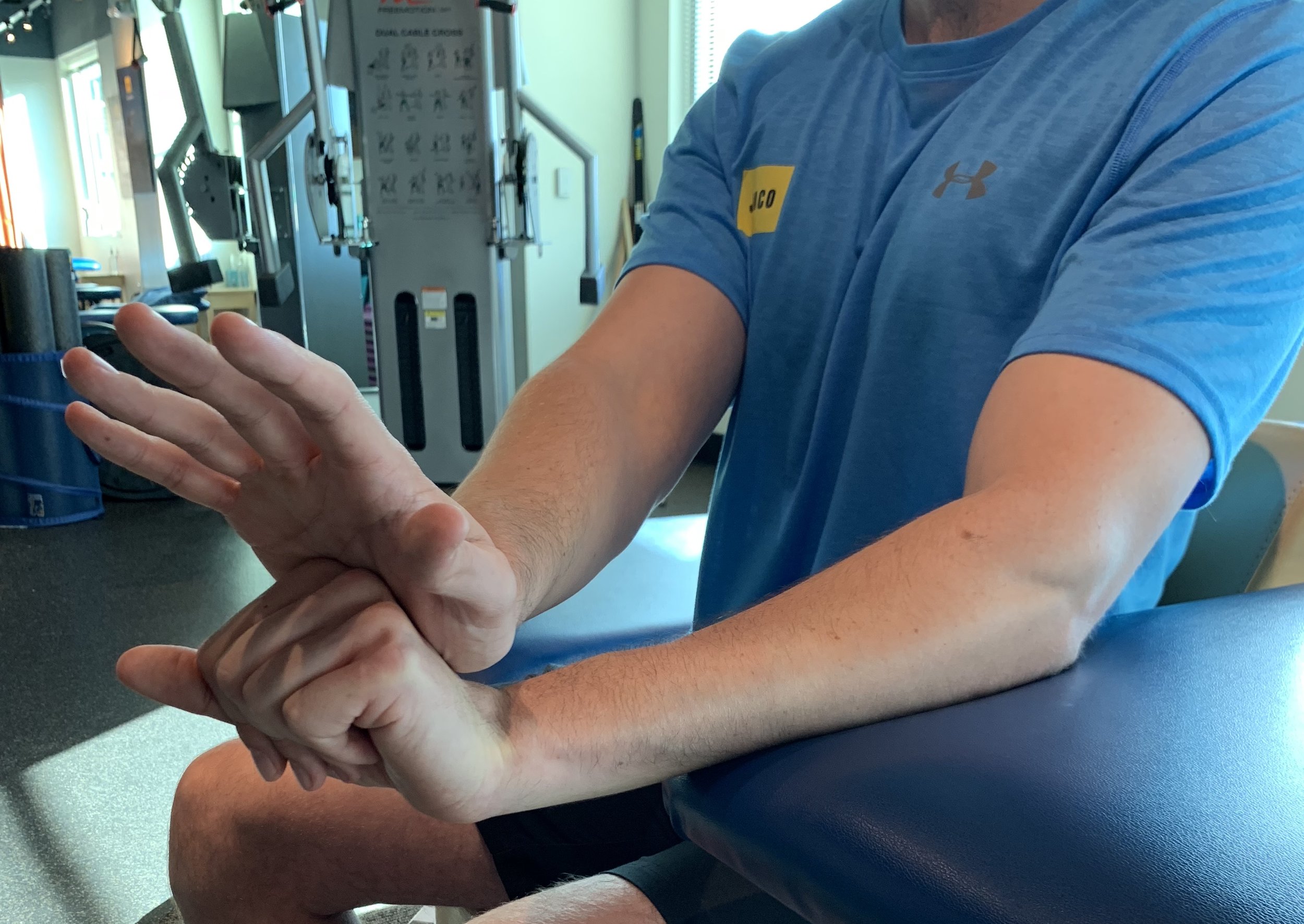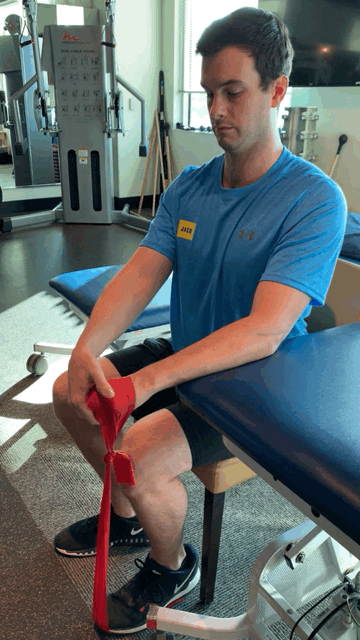Managing Your Tennis Elbow
Mahalo to Connor Hyde, DPT from Jaco Rehab for sharing this article with us.
What is Tennis Elbow?
Tennis elbow, also known as lateral epicondylitis, is a nagging elbow injury common to many tennis players. In fact, it is one of the most commonly reported upper extremity injuries from recreational tennis players. The injury develops due to overuse, however with activity modification and specific exercises, it can be managed.
With tennis elbow, pain typically develops on the outside of the elbow where a group of muscles called the “common forearm extensors” originate. These muscles extend as far down as the middle finger and have a primary job of extending, deviating and rotating the wrist.
Causes of Tennis Elbow
During tennis these muscles will become overused due to the repetitive strain of gripping the racquet against contact of the ball. As the ball strikes the strings, it destabilizes the racquet head and increases vibrations. This will force the wrist out of the neutral position and cause the extensor muscles to work overtime to keep the wrist in this position and dampen the added vibration.
As the muscle overworks, the tendon which attaches to the elbow begins to change its cellular matrix, which alters motor performance, sensation and pain. Recent studies show that tennis elbow is caused by overuse to these muscles, causing degeneration and microtears primarily to the extensor muscle insertion.
Beginning Your Rehab
Understanding your body and the amount of pain you are in is the first step in rehabilitation. If you are in pain it means the tendon which attaches the muscle the elbow is aggravated and unable to tolerate the forces generated from your time on the court. To begin managing this pain I like to break rehab down into 4 categories to focus on.
Soft Tissue Massage
The close proximity of muscles, tendons and ligaments in your forearm can cause them to tighten and stick together. Take a tennis ball or massage ball and beginning slowly rolling and finding the tight areas from the elbow down to the wrist. This can be done on a table or at a wall. Perform for 5 minutes, 2-3 times per day.
Stretching the Forearm Muscles
Gentle stretching can help relax the forearm muscle. A simple stretch to do at home 3-4 times a day involves extending your injured arm and with your opposite hand flexing your wrist down. Try a set with your arm straight and your arm bent. Hold each stretch for 2 sets of 30 seconds.
Strengthening Your Stabilizing Muscles
It is important to strengthen the muscles above your elbow, including shoulder, rotator cuff and back muscles. Decreased strength in these muscles will cause increased stress on the elbow. One exercise to perform at home involves using a theraband. First wrap the band around your hand several times so you don’t overwork your gripping muscles. Next, while keeping your arms at your side, rotate your arms out while squeezing your shoulder blades together. This will work each of the muscle groups listed above. Perform 3 sets of 12, 2-3 times per day.
Strengthen the forearm tendon and muscles: It is important to begin strengthening the overworked muscles and tendons at a low load. The first step is isometric wrist extension as shown below. Isometric means holding one position against resistance for an extended period of time which can cause a pain relief effect while strengthening the muscle and tendon. Extend your injured wrist and hold against 50-75% of your maximum effort for 30 seconds. Repeat 3-5 times.
Once you can tolerate isometric activities while keeping pain levels below the 3/10 threshold it is time to move onto eccentric strengthening of the muscle. Eccentric strengthening involves adding resistance against the muscle as it lengthens and is the most important movement to strengthening.* For this exercise, bring your hand into an extended position with your opposite hand. Then slowly allow your wrist to return to a neutral position against the resistance of the therapy band. Perform 3 sets of 12 repetitions and remember to use your opposite hand to assist in order not to overwork the muscle.
Along with eccentric strengthening of the forearm muscle, it is important to strengthen the supinator and pronator muscles, which are responsible for rotations. A quick exercise is grabbing a light-weight dumbbell and holding it by one end like the picture below. With your elbow supported, slowly rotate your palm up and down.
On-Court Tennis Elbow Factors
To add to the demand the extensor muscles are put through with tennis, there are other factors that contribute to tennis elbow. The first is faulty biomechanics in the swing. You may be contacting the ball with your wrist in a flexed rather than neutral position. Or you may be making contact with the ball either too late or too early in the strike zone. Typically with one-handed backhands, I see people making contact with the ball too late, putting the wrist in a vulnerable position. The second big one is tennis equipment. Increased string tension or unforgiving tennis string can increase the strain and vibration on your arm. With so much variety in tennis equipment, it is important to try new set-ups.
The Final Takeaway
The final take-away you should make note of if you have tennis elbow, is that it is important to take some time off. Tennis elbow is an overuse injury. Taking time off and performing some of the exercises above will help decrease your pain and increase the longevity of your career. Living in Hawaii there will always be time to play tennis, but playing in pain is no way enjoy your time on the court!
About the Author:
Connor is a New Hampshire native and state champion tennis player with over 20 years of experience playing and teaching tennis. A college tennis player at University of Redlands, he now resides in Honolulu and practices physical therapy at JACO Rehab.
For any questions or if you have an injury you want evaluated, please visit jacorehab.com or email them at info@jacorehab.com.
References:
Buchanan BK, Varacallo M. Tennis Elbow (Lateral Epicondylitis) [Updated 2019 Jan 20]. In: StatPearls [Internet]. Treasure Island (FL): StatPearls Publishing; 2018 Jan. Learn More
Cullinane FL, Boocock MG, Trecelyan FC. Is eccentric exercise an effective treatment for lateral epicondylitis? A systematic review. Clinical Rehabilitation. 2014 Jan; 28(1):3-19. Learn More







